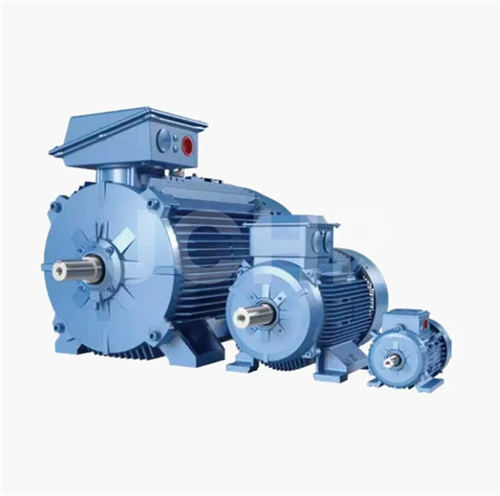Basic knowledge of proportional valves
Proportional valves are a new type of hydraulic control device. Proportional solenoids are used to replace the original control parts on ordinary pressure valves, flow valves and directional valves, and the pressure, flow or direction of the oil flow is continuously and proportionally controlled remotely according to the input electrical signal. Proportional valves generally have pressure compensation performance, and the output pressure and flow can be unaffected by load changes.
Electro-hydraulic proportional control valves (proportional valves for short) are essentially a cheap electro-hydraulic control valve with good anti-pollution performance. The development of proportional valves has gone through two paths. One is to replace the manual adjustment input mechanism of traditional hydraulic valves with proportional solenoids, and various proportional direction, pressure and flow valves have been developed on the basis of traditional hydraulic valves; the other is that some original electro-hydraulic servo valve manufacturers have developed them after reducing the design and manufacturing accuracy on the basis of electro-hydraulic servo valves. With the development of hydraulic transmission and hydraulic servo systems, some hydraulic systems that require continuous control of pressure, flow and direction, but do not require high control accuracy, have appeared in production practice. Since ordinary hydraulic components cannot meet certain servo requirements, and the use of electro-hydraulic servo valves is too wasteful due to the low control accuracy requirements, proportional control valves between ordinary hydraulic components (switch control) and servo valves (continuous control) have been produced in recent years.
Working principle of proportional valve
The command signal is amplified by the proportional amplifier, and the proportional current is output to the proportional solenoid of the proportional valve in proportion. The proportional solenoid outputs force and moves the position of the valve core in proportion, which can proportionally control the flow rate of the liquid flow and change the direction of the liquid flow, thereby realizing the position or speed control of the actuator. In some applications where the position or speed accuracy is required to be high, a closed-loop control system can also be formed by detecting the displacement or speed of the actuator.
The proportional valve consists of a DC proportional solenoid and a hydraulic valve. The core of the proportional valve to achieve continuous control is the use of a proportional solenoid. There are many types of proportional solenoids, but the working principles are basically the same. They are all developed according to the control needs of the proportional valve.

Classification
Classification by proportional valve control method refers to the classification based on the electrical-mechanical conversion method in the pilot control valve of the proportional valve. The electrical control part has various forms such as proportional solenoid, torque motor, DC servo motor, etc.
(1) Electromagnetic type Electromagnetic type refers to a proportional valve that uses a proportional solenoid as an electrical-mechanical conversion element. The proportional solenoid converts the input current signal into a force and displacement mechanical signal output, thereby controlling parameters such as pressure, flow and direction.
(2) Electric type Electric type refers to a proportional control valve that uses a DC servo motor as an electrical-mechanical conversion element. The DC servo motor converts the input electrical signal into a rotational motion speed, and then outputs force and displacement through a reduction device and conversion mechanism such as a screw nut, a gear rack or a gear cam, and further controls hydraulic parameters.
Further reading:Hydraulic control valve - principle and use of directional control valve
Selection of hydraulic flow control valves
Mechanical Parts & Fabrication Services
What Is the Difference Between Flexible Metal Conduit and Metal Conduit?
2024 Trends in 28mm Gate Valve Technology
Essential Guide to 28mm Gate Valves: FAQs & Expert Tips
How Overhead Block Clamps Are Redefining Construction?
(3) Electro-hydraulic type Electro-hydraulic type refers to a proportional valve that uses a torque motor and a nozzle baffle as a pilot control stage. Different electrical signals are input to the torque motor, and displacement or angular displacement is output through the baffle connected to it (sometimes the armature of the torque motor is the baffle), changing the distance between the baffle and the nozzle, causing the flow resistance of the oil sprayed from the nozzle to change, thereby controlling the input parameters.
Features
The proportional control valve is a control valve that continuously and proportionally controls the flow, pressure and direction of the hydraulic system according to the input electrical signal. Its output flow and pressure can be unaffected by load changes.
Compared with ordinary hydraulic components, the proportional valve has the following characteristics:
(1) The electrical signal is easy to transmit and can easily achieve remote control.
(2) It can continuously and proportionally control the pressure and flow of the hydraulic system, realize the control of the position, speed and force of the actuator, and reduce the impact during pressure change.
(3) The number of components is reduced and the oil circuit is simplified.
At the same time, the use conditions and maintenance of the electro-hydraulic proportional valve are the same as those of general hydraulic components. It has stronger anti-pollution performance than the servo valve and is more reliable.
How Do Overhead Block Clamps Transform Concrete Projects?
How Will Longhe Attachment OEM Shape Industries?
How Does Heavy-Duty Forklift Attachment Work?
4 Tips to Select the Right Attachments for Your Forklift
Forklift Clamps vs. Conventional Forks: Which is Best for You?
How Do Advanced Waste Management Systems Work?
How Do Bale Clamps Benefit Contractors?
Related Articles
If you are interested in sending in a Guest Blogger Submission,welcome to write for us!









Comments
0